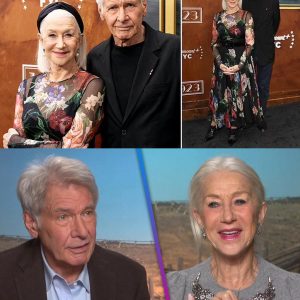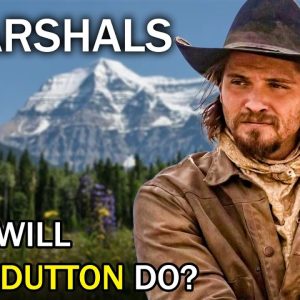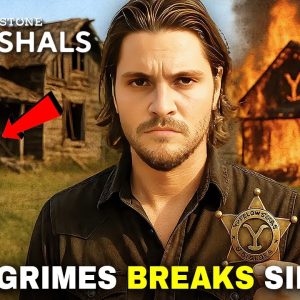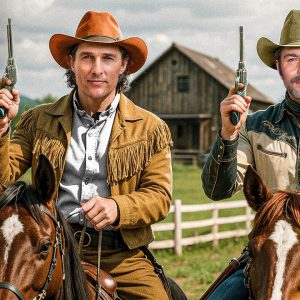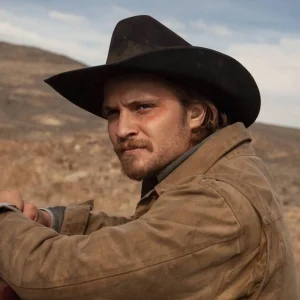Yellowstone’s Most Shocking Deaths: How Taylor Sheridan’s Ruthless Saga Has Redefined Star Power and Tragedy
From the windswept plains of Montana to the unforgiving trails of the American frontier, Taylor Sheridan’s Yellowstone universe has become a high-stakes battlefield where power, loyalty, and blood are constantly tested. Since Yellowstone first aired in 2018, the franchise has grown into a multi-generational epic of the Dutton dynasty, with two prequels—1883 and 1923—adding layers of emotional depth and historical tragedy. Sheridan, known for his unflinching storytelling, has never shied away from killing off even the biggest stars. And as fans have learned time and again, no one is safe—not even the Duttons.
The Death That Shattered the Franchise: John Dutton’s Fate
At the heart of Yellowstone stood Kevin Costner’s John Dutton III, the grizzled patriarch whose determination to protect the Yellowstone Ranch defined the series. John was more than a rancher—he was the soul of the Dutton legacy, a man fiercely protective of the land passed down through generations. So when Yellowstone Season 5, Part 2 opened with John’s death, it wasn’t just the end of a character—it was the end of an era.
Costner’s exit, while devastating, was always part of Sheridan’s master plan. John’s death becomes the catalyst for his son Kayce Dutton (Luke Grimes) to follow through on a promise: to return the land to its indigenous ancestors. The emotional weight of this decision underscores the moral complexity of the series, as Kayce wrestles with the burden of legacy and loss.
But John’s murder wasn’t just a tragic twist—it was orchestrated, at least indirectly, by someone within the family.
The Betrayal Within: Jamie Dutton’s Fall from Grace
Wes Bentley’s portrayal of Jamie Dutton has taken fans on a harrowing journey from misunderstood son to calculating antagonist. Adopted into the Dutton family but never truly embraced, Jamie’s internal battle for identity and power culminates in an alliance with Market Equities operative Sarah Atwood (Dawn Olivieri). Though Jamie may not have pulled the trigger himself, his collusion with Atwood set a deadly plot in motion.
The ripple effects of John’s death are immediate and brutal. Beth Dutton (Kelly Reilly), ever the fierce protector of her father and the ranch, pieces together Jamie’s betrayal. In a chilling finale moment, Beth confronts her adopted brother and exacts revenge—plunging a knife into Jamie in a stunning act of justice and fury. Their toxic sibling rivalry, already among the most emotionally fraught dynamics in the series, reaches its brutal crescendo.
Dan Jenkins and the Beck Brothers: Enemies and Alliances
Not every villain in Yellowstone is pure evil. Danny Huston’s Dan Jenkins started out as a scheming developer, threatening the sanctity of the ranch. But over time, Jenkins evolved into a more nuanced character. His alliance with John Dutton—born from necessity, not trust—against the brutal Beck Brothers showed that even enemies could unite against greater threats.
Jenkins’ death in Season 2, however, reminded viewers just how unforgiving the world of Yellowstone can be. Targeted by Malcolm (Neal McDonough) and Teal Beck (Terry Serpico), Jenkins met his end in a strategic and vicious power play. While he may have been a thorn in John’s side, his death felt like a loss of potential peace—a reminder that sometimes the devil you know is better than the one waiting in the shadows.
The Beck Brothers themselves received fittingly grim fates. After orchestrating the kidnapping of John’s grandson Tate, their cruelty reached new lows. In a visceral moment of vengeance, Kayce killed Teal while he was sitting defenseless on a toilet. John confronted Malcolm personally, delivering a fatal wound—but not before giving him a moment of peace in death, a rare mercy that revealed John’s haunted soul.
Rourke Morris and the Snake’s Bite
Josh Holloway’s Rourke Morris, a slick Market Equities investor, learned the hard way not to mess with Rip Wheeler (Cole Hauser) and the Yellowstone cowboys. Rourke’s tactics to undermine the ranch—including hiring Wade Morrow to stir trouble—made him a serious threat. But Rip’s response was as brutal as it was creative: he delivered death via rattlesnake. In one of the franchise’s most shocking kills, Rip threw the venomous serpent at Rourke while he was fishing, leading to a painful and poetic end.
Tragedy on the Trail: The Deaths of Shea Brennan and the 1883 Pioneers
In 1883, Taylor Sheridan painted a gut-wrenching portrait of the American frontier’s harsh realities. Sam Elliott’s Shea Brennan led a wagon train of immigrants across treacherous land, haunted by the death of his wife. After delivering his caravan to safety, Shea fulfilled a quiet promise to himself—he walked into the Pacific Ocean and took his own life, finding peace in the waves where he once dreamed of reunion.
This quiet, heartbreaking death is among the most moving in the Yellowstone universe. Shea’s demise reflects the central theme of 1883: survival does not guarantee happiness, and hope often dies with the dream.
James and Margaret Dutton (Tim McGraw and Faith Hill), the power couple at the heart of 1883, made it to Paradise Valley—but the land they fought for would ultimately cost them their lives. A Yellowstone flashback reveals James died in a shootout with bandits, while Margaret’s body was later found frozen, her death untold but heavily felt. Their sacrifices laid the foundation for generations to come—and for tragedy to repeat itself.
Villainy in the Roaring Twenties: Donald Whitfield’s Reign Ends
In 1923, Timothy Dalton’s Donald Whitfield emerges as a calculated, menacing antagonist—one who funds the war against the Duttons and orchestrates heartbreak from behind fine dining tables. His crimes culminate in the death of Spencer Dutton’s wife, and in the series finale, Spencer (Brandon Sklenar) delivers swift justice, shooting Whitfield in cold blood at his own table.
Whitfield’s demise is deeply satisfying yet sorrowful. He represents the kind of slow-burn evil that infects through manipulation, and his death—while justified—symbolizes the personal cost of revenge. 1923 wouldn’t have been the same without Dalton’s commanding performance, and Whitfield’s end cements him as one of the franchise’s most chilling villains.
A Legacy Written in Blood
The Yellowstone universe is defined not just by the land it reveres, but by the blood spilled to protect or possess it. Taylor Sheridan’s refusal to shield even the most beloved characters from death elevates the storytelling, grounding it in grim realism and emotional consequence. Whether it’s the cold-blooded murder of a patriarch, the suicide of a grieving soldier, or the revenge-fueled end of a snake-tossing cowboy, each death leaves a scar—and a ripple that echoes across generations.
In Yellowstone, death is never random. It is strategic, emotional, and symbolic. And as fans await the franchise’s next chapter, one thing remains clear: no star is too big to fall. And no legacy—no matter how legendary—is safe from the price of power.
